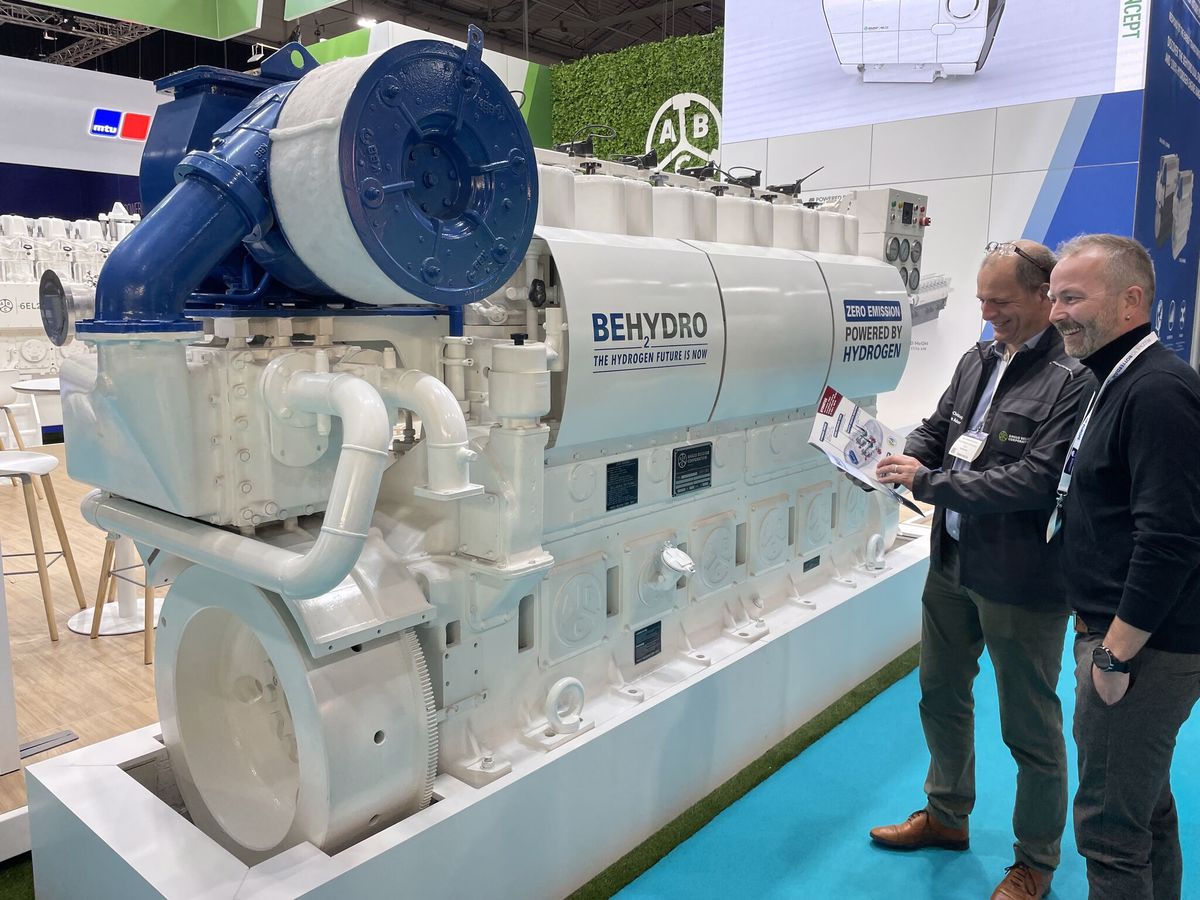BeHydro gets LR’s ‘type approval’ for dual-fuel hydrogen combustion engine
Classification society Lloyd’s Register (LR) has awarded a “type approval” for a new hydrogen-powered dual-fuel combustion engine.
 PHOTO: A model of BeHydro's dual-fuel hydrogen engine showcased at the Europort 2023 event in Rotterdam last week. BeHydro
PHOTO: A model of BeHydro's dual-fuel hydrogen engine showcased at the Europort 2023 event in Rotterdam last week. BeHydro
The engine is designed by BeHydro, a joint venture between Belgian duo – marine engineering firm CMB.TECH and engine manufacturer Anglo Belgian Corporation (ABC Engines).
The “first-of-its-kind” type approval validates the safety and performance of BeHydro engines, Tim Berckmoes, chief executive of ABC Engines said. “The dual-fuel hydrogen engines are ready for all marine applications worldwide,” he added.
LR issued approval in principle for this engine concept in September 2020. The recent type approval by LR confirms BeHydro's capability to produce the engine with the necessary standards.
The dual-fuel engine operates on 85% hydrogen gas and 15% conventional fuel, BeHydro explains on its website. It is a four-stroke medium-speed engine.
The engine “offers shipowners the potential to reduce CO2 emissions by up to 85%" compared to conventional-fuelled engines. The dual-fuel technology allows it "to continue supplying power using conventional fuels when no renewable energy or hydrogen is available,” LR notes.
To realistically achieve 85% CO2 emissions reduction, 85% of the total fuel used to power the vessel must be green hydrogen with zero carbon emissions.
Hydrogen’s potential beyond short-sea shipping
While hydrogen is an attractive option for decarbonising smaller vessels, its potential to power large ocean-going vessels is still limited. This is mainly due to the challenges associated with hydrogen storage onboard vessels.
According to BeHydro, the dual-fuel engine four-stroke engine can be used to power tugboats, feeder vessels, inland waterway vessels, service vessels, passenger ferries and cruise ships. Four-stroke engines are typically used to power smaller vessels or cruise ships.
Since hydrogen gas has a low volumetric energy density, it is easily lost into the atmosphere if not stored right. Therefore, hydrogen must be compressed into a gas or liquefied at cryogenic temperatures to store it for use as bunker fuel.
There are, however, some drawbacks to both of these storage methods. Compressing hydrogen to reduce its volume is an energy-intensive process that typically results in higher capital and operating costs. Alternatively, liquefying hydrogen is an even more complex and costly process. Liquid hydrogen evaporates if it reaches higher temperatures. So the storage tank must be fitted with specific insulating materials to minimise the heat flux into the tank and maintain cryogenic temperatures. Some of these materials as well as the process can be quite expensive.
Finnish engine maker MAN Energy Solutions is also working on its own hydrogen-fuelled four-stroke combustion engine for ships. However, it has not yet specified a timeline for the commercial launch of these engines.
By Konica Bhatt
Please get in touch with comments or additional info to news@engine.online





